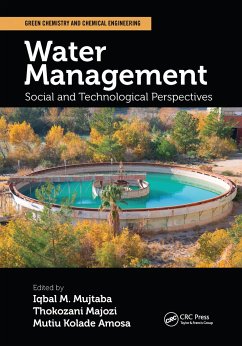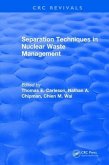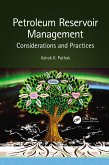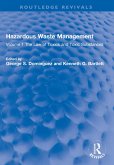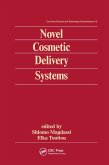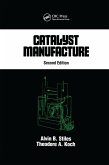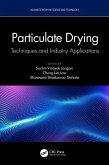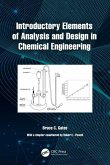Water Management
Social and Technological Perspectives
Herausgeber: Mujtaba, Iqbal M.; Amosa, Mutiu Kolade; Majozi, Thokozani
Water Management
Social and Technological Perspectives
Herausgeber: Mujtaba, Iqbal M.; Amosa, Mutiu Kolade; Majozi, Thokozani
- Broschiertes Buch
- Merkliste
- Auf die Merkliste
- Bewerten Bewerten
- Teilen
- Produkt teilen
- Produkterinnerung
- Produkterinnerung
Exponential growth in population and improved standards of living demand increasing amount of freshwater and are putting serious strain on the quantity of naturally available freshwater worldwide. Water Management: Social and Technological Perspectives discusses developments in energy-efficient water production, management, wastewater treatment, and social and political aspects related to water management and re-use of treated water. It features a scientific and technological perspective to meeting current and future needs, discussing such technologies as membrane separation using reverse…mehr
Andere Kunden interessierten sich auch für
![Separation Techniques in Nuclear Waste Management (1995) Separation Techniques in Nuclear Waste Management (1995)]() Thomas E CarlesonSeparation Techniques in Nuclear Waste Management (1995)89,99 €
Thomas E CarlesonSeparation Techniques in Nuclear Waste Management (1995)89,99 €![Petroleum Reservoir Management Petroleum Reservoir Management]() Ashok PathakPetroleum Reservoir Management89,99 €
Ashok PathakPetroleum Reservoir Management89,99 €![Hazardous Waste Management Hazardous Waste Management]() Hazardous Waste Management77,99 €
Hazardous Waste Management77,99 €![Novel Cosmetic Delivery Systems Novel Cosmetic Delivery Systems]() Novel Cosmetic Delivery Systems88,99 €
Novel Cosmetic Delivery Systems88,99 €![Catalyst Manufacture Catalyst Manufacture]() Alvin B StilesCatalyst Manufacture91,99 €
Alvin B StilesCatalyst Manufacture91,99 €![Particulate Drying Particulate Drying]() Particulate Drying68,99 €
Particulate Drying68,99 €![Introductory Elements of Analysis and Design in Chemical Engineering Introductory Elements of Analysis and Design in Chemical Engineering]() Bruce C GatesIntroductory Elements of Analysis and Design in Chemical Engineering99,99 €
Bruce C GatesIntroductory Elements of Analysis and Design in Chemical Engineering99,99 €-
-
-
Exponential growth in population and improved standards of living demand increasing amount of freshwater and are putting serious strain on the quantity of naturally available freshwater worldwide. Water Management: Social and Technological Perspectives discusses developments in energy-efficient water production, management, wastewater treatment, and social and political aspects related to water management and re-use of treated water. It features a scientific and technological perspective to meeting current and future needs, discussing such technologies as membrane separation using reverse osmosis, the use of nanoparticles for adsorption of impurities from wastewater, and the use of thermal methods for desalination. The book also discusses increasing the efficiency of water usage in industrial, agricultural, and domestic applications to ensure a sustainable system of water production, usage, and recycling. With 30 chapters authored by internationally renowned experts, this work offers readers a comprehensive view of both social and technological outlooks to help solve this global issue.
Hinweis: Dieser Artikel kann nur an eine deutsche Lieferadresse ausgeliefert werden.
Hinweis: Dieser Artikel kann nur an eine deutsche Lieferadresse ausgeliefert werden.
Produktdetails
- Produktdetails
- Verlag: CRC Press
- Seitenzahl: 592
- Erscheinungstermin: 30. Juni 2021
- Englisch
- Abmessung: 254mm x 178mm x 32mm
- Gewicht: 1098g
- ISBN-13: 9781032094441
- ISBN-10: 1032094443
- Artikelnr.: 62151469
- Herstellerkennzeichnung
- Libri GmbH
- Europaallee 1
- 36244 Bad Hersfeld
- gpsr@libri.de
- Verlag: CRC Press
- Seitenzahl: 592
- Erscheinungstermin: 30. Juni 2021
- Englisch
- Abmessung: 254mm x 178mm x 32mm
- Gewicht: 1098g
- ISBN-13: 9781032094441
- ISBN-10: 1032094443
- Artikelnr.: 62151469
- Herstellerkennzeichnung
- Libri GmbH
- Europaallee 1
- 36244 Bad Hersfeld
- gpsr@libri.de
Iqbal M. Mujtaba, PhD, is a Professor of Computational Process Engineering in the School of Engineering at the University of Bradford. Thokozani Majozi, PhD, is a full professor in the School of Chemical and Metallurgical Engineering at Wits University where he also holds the NRF/DST Chair in Sustainable Process Engineering. Mutiu Kolade Amosa, PhD, is currently a Research Fellow in Sustainable Process Engineering in the School of Chemical and Metallurgical Engineering at the University of the Witwatersrand in Johannesburg, South Africa. He is a trained Chemical Engineer with Bachelor's and Master's Degrees in Chemical Engineering from Ladoke Akintola University of Technology and Ahmadu Bello University, respectively. Dr. Amosa obtained his Ph.D. Degree in Environmental Process Engineering from the International Islamic University Malaysia and won the best doctoral award. He also won the most highly cited researcher award at the University of the Witwatersrand in 2017. Dr. Amosa is a permanent staff of the Department of Petroleum Resources (DPR) - the Oil and Gas Regulatory Agency in Nigeria, where he works as a Senior Chemical Engineer at the agency's headquarters in Lagos, Nigeria. He is also an International Research Expert and member of the Environmental Engineering and Management Research Group, Faculty of Environment and Labour Safety at Ton Duc Thang University, Ho Chi Minh City, Vietnam. Previously, Dr. Amosa served as a Research Fellow between 2011 and 2012 under the Petroleum Technology Development Fund (PTDF) endowment of the Ahmadu Bello University, Nigeria where he worked on drilling fluid technologies; and development of zeolites and molecular sieves for petroleum refining applications. He also served as research/teaching assistant under the Bioenvironmental Engineering Research Centre (BERC) at International Islamic University Malaysia where he worked on several research projects relating to environmental process engineering between 2012 and 2015. He currently serves as an Editor for Cogent Engineering Journal (Taylor & Francis Group), and he is an award winning reviewer (awarded by Publons in 2017) for many reputable journals and conferences. Dr. Amosa is a corporate member of the American Institute of Chemical Engineers (AIChE); Nigerian Society of Chemical Engineers (NSChE); Association of Environmental Engineering & Science Professors (AEESP); International Water Association (IWA); the Society of Petroleum Engineers (SPE); amongst others. Widely published and cited, he focuses his research on process design, modelling and optimization; environmental process engineering; sustainable process systems engineering; less common separation technologies and their wide applications; and development of micro- & nano-porous materials.
Section 1: Social Perspective. Water security and the rise of sectarian
conflict in Yemen. Water Diplomacy: Solving the equations of conflict,
economic growth, social wellbeing and ecosystem demand. Achieving Effective
Water Management and Access within Africa's Socio-Political and Cultural
Complexities: Issues and Policy Directions/Options. Section 2: Freshwater
by Desalination. The Capability of Forward Osmosis in Irrigation Water
Supply. Recent advancements in the application of microbial desalination
cells for water desalination, wastewater treatment, and energy production.
Effect of the Draw Solution on the Efficiency of Two-stage FO-RO/BWRO for
Seawater and Brackish Water Desalination. Freshwater production using
Multiple-Effect Evaporator. Freshwater Production by Multi-Stage Flash
(MSF) Desalination Process. Section 3: Wastewater Treatment: Membrane and
Polymer Based Process. Modelling of Pore-blocking Behaviors of Low-pressure
Membranes during Constant-pressure Filtration of an Agro-industrial
Wastewater. Sodalite and Chitosan based Composite Membrane Materials for
Treatment of Metal-containing Wastewater in Mining Operations. The removal
of phenol and phenolic compounds from wastewater using Reverse Osmosis:
Process modelling, simulation, and optimization. Section 4: Wastewater
Treatment: Oxidation and Electrochemical Process. Industrial Three Phase
Oxidation Reactor for Wastewater Treatment. Electrolytic Treatment of
Wastewater for Reuse Purposes, Case Study of the New Damietta Harbor
Plants. Inactivation of waterborne pathogens in municipal wastewater using
ozone. Photocatalytic oxidation of non-acid oxygenated hydrocarbons:
Application in GTL process water treatment. Section 5: Wastewater
Treatment: Adsorption Process. Bio-sorption of Methylene Blue Dye Using
Anise Tea Residue. LIBS Technique as an Evaluation Tool for Improving
Industrial Wastewater Quality by Different Adsorption Methods. Low cost
adsorbent for ammonia nitrogen removal: A review. Section 6: Wastewater
Treatment: Biological Processes. Application of natural zeolite in textile
wastewater treatment: Integrated photodegradation and anaerobic digestion
system. Mathematical Process Modeling and Biokinetics of Activated Sludge
Processes. Hythane (H2 and CH4) production from petrochemical wastewater
via anaerobic digestion process. Anaerobic degradation of lipid-rich
wastewater. Section 7: Water Networks. Regeneration-Recycling of Industrial
Wastewater to Minimise Usage of Freshwater Using Water Cascade Analysis.
Total Site Water Integration Considering Multiple Water Reuse Headers.
Exploring Water Reuse Opportunities in a Large-Scale Milk Processing Plant
through Process Integration. Section 8: Water Management. A Case of
Waste-Water Management Modelling at Southern Singapore Sea: Application for
Coral Reefs Protection. Catchments as Asset Systems: A Transdisciplinary
Approach for Integrated Water Resources Management. Water Efficiency Lapses
and Sustainable Solutions: Educational Buildings in Johannesburg South
Africa. Section 9: Water-Energy Nexus. Simultaneous Optimization of Water
and Energy in Integrated Water and Membrane Networks: A Case for
Water-Energy Nexus. Interaction of Energy Consumption, Energy Quality and
Freshwater Production in Multi Effect Desalination Process.
conflict in Yemen. Water Diplomacy: Solving the equations of conflict,
economic growth, social wellbeing and ecosystem demand. Achieving Effective
Water Management and Access within Africa's Socio-Political and Cultural
Complexities: Issues and Policy Directions/Options. Section 2: Freshwater
by Desalination. The Capability of Forward Osmosis in Irrigation Water
Supply. Recent advancements in the application of microbial desalination
cells for water desalination, wastewater treatment, and energy production.
Effect of the Draw Solution on the Efficiency of Two-stage FO-RO/BWRO for
Seawater and Brackish Water Desalination. Freshwater production using
Multiple-Effect Evaporator. Freshwater Production by Multi-Stage Flash
(MSF) Desalination Process. Section 3: Wastewater Treatment: Membrane and
Polymer Based Process. Modelling of Pore-blocking Behaviors of Low-pressure
Membranes during Constant-pressure Filtration of an Agro-industrial
Wastewater. Sodalite and Chitosan based Composite Membrane Materials for
Treatment of Metal-containing Wastewater in Mining Operations. The removal
of phenol and phenolic compounds from wastewater using Reverse Osmosis:
Process modelling, simulation, and optimization. Section 4: Wastewater
Treatment: Oxidation and Electrochemical Process. Industrial Three Phase
Oxidation Reactor for Wastewater Treatment. Electrolytic Treatment of
Wastewater for Reuse Purposes, Case Study of the New Damietta Harbor
Plants. Inactivation of waterborne pathogens in municipal wastewater using
ozone. Photocatalytic oxidation of non-acid oxygenated hydrocarbons:
Application in GTL process water treatment. Section 5: Wastewater
Treatment: Adsorption Process. Bio-sorption of Methylene Blue Dye Using
Anise Tea Residue. LIBS Technique as an Evaluation Tool for Improving
Industrial Wastewater Quality by Different Adsorption Methods. Low cost
adsorbent for ammonia nitrogen removal: A review. Section 6: Wastewater
Treatment: Biological Processes. Application of natural zeolite in textile
wastewater treatment: Integrated photodegradation and anaerobic digestion
system. Mathematical Process Modeling and Biokinetics of Activated Sludge
Processes. Hythane (H2 and CH4) production from petrochemical wastewater
via anaerobic digestion process. Anaerobic degradation of lipid-rich
wastewater. Section 7: Water Networks. Regeneration-Recycling of Industrial
Wastewater to Minimise Usage of Freshwater Using Water Cascade Analysis.
Total Site Water Integration Considering Multiple Water Reuse Headers.
Exploring Water Reuse Opportunities in a Large-Scale Milk Processing Plant
through Process Integration. Section 8: Water Management. A Case of
Waste-Water Management Modelling at Southern Singapore Sea: Application for
Coral Reefs Protection. Catchments as Asset Systems: A Transdisciplinary
Approach for Integrated Water Resources Management. Water Efficiency Lapses
and Sustainable Solutions: Educational Buildings in Johannesburg South
Africa. Section 9: Water-Energy Nexus. Simultaneous Optimization of Water
and Energy in Integrated Water and Membrane Networks: A Case for
Water-Energy Nexus. Interaction of Energy Consumption, Energy Quality and
Freshwater Production in Multi Effect Desalination Process.
Section 1: Social Perspective. Water security and the rise of sectarian
conflict in Yemen. Water Diplomacy: Solving the equations of conflict,
economic growth, social wellbeing and ecosystem demand. Achieving Effective
Water Management and Access within Africa's Socio-Political and Cultural
Complexities: Issues and Policy Directions/Options. Section 2: Freshwater
by Desalination. The Capability of Forward Osmosis in Irrigation Water
Supply. Recent advancements in the application of microbial desalination
cells for water desalination, wastewater treatment, and energy production.
Effect of the Draw Solution on the Efficiency of Two-stage FO-RO/BWRO for
Seawater and Brackish Water Desalination. Freshwater production using
Multiple-Effect Evaporator. Freshwater Production by Multi-Stage Flash
(MSF) Desalination Process. Section 3: Wastewater Treatment: Membrane and
Polymer Based Process. Modelling of Pore-blocking Behaviors of Low-pressure
Membranes during Constant-pressure Filtration of an Agro-industrial
Wastewater. Sodalite and Chitosan based Composite Membrane Materials for
Treatment of Metal-containing Wastewater in Mining Operations. The removal
of phenol and phenolic compounds from wastewater using Reverse Osmosis:
Process modelling, simulation, and optimization. Section 4: Wastewater
Treatment: Oxidation and Electrochemical Process. Industrial Three Phase
Oxidation Reactor for Wastewater Treatment. Electrolytic Treatment of
Wastewater for Reuse Purposes, Case Study of the New Damietta Harbor
Plants. Inactivation of waterborne pathogens in municipal wastewater using
ozone. Photocatalytic oxidation of non-acid oxygenated hydrocarbons:
Application in GTL process water treatment. Section 5: Wastewater
Treatment: Adsorption Process. Bio-sorption of Methylene Blue Dye Using
Anise Tea Residue. LIBS Technique as an Evaluation Tool for Improving
Industrial Wastewater Quality by Different Adsorption Methods. Low cost
adsorbent for ammonia nitrogen removal: A review. Section 6: Wastewater
Treatment: Biological Processes. Application of natural zeolite in textile
wastewater treatment: Integrated photodegradation and anaerobic digestion
system. Mathematical Process Modeling and Biokinetics of Activated Sludge
Processes. Hythane (H2 and CH4) production from petrochemical wastewater
via anaerobic digestion process. Anaerobic degradation of lipid-rich
wastewater. Section 7: Water Networks. Regeneration-Recycling of Industrial
Wastewater to Minimise Usage of Freshwater Using Water Cascade Analysis.
Total Site Water Integration Considering Multiple Water Reuse Headers.
Exploring Water Reuse Opportunities in a Large-Scale Milk Processing Plant
through Process Integration. Section 8: Water Management. A Case of
Waste-Water Management Modelling at Southern Singapore Sea: Application for
Coral Reefs Protection. Catchments as Asset Systems: A Transdisciplinary
Approach for Integrated Water Resources Management. Water Efficiency Lapses
and Sustainable Solutions: Educational Buildings in Johannesburg South
Africa. Section 9: Water-Energy Nexus. Simultaneous Optimization of Water
and Energy in Integrated Water and Membrane Networks: A Case for
Water-Energy Nexus. Interaction of Energy Consumption, Energy Quality and
Freshwater Production in Multi Effect Desalination Process.
conflict in Yemen. Water Diplomacy: Solving the equations of conflict,
economic growth, social wellbeing and ecosystem demand. Achieving Effective
Water Management and Access within Africa's Socio-Political and Cultural
Complexities: Issues and Policy Directions/Options. Section 2: Freshwater
by Desalination. The Capability of Forward Osmosis in Irrigation Water
Supply. Recent advancements in the application of microbial desalination
cells for water desalination, wastewater treatment, and energy production.
Effect of the Draw Solution on the Efficiency of Two-stage FO-RO/BWRO for
Seawater and Brackish Water Desalination. Freshwater production using
Multiple-Effect Evaporator. Freshwater Production by Multi-Stage Flash
(MSF) Desalination Process. Section 3: Wastewater Treatment: Membrane and
Polymer Based Process. Modelling of Pore-blocking Behaviors of Low-pressure
Membranes during Constant-pressure Filtration of an Agro-industrial
Wastewater. Sodalite and Chitosan based Composite Membrane Materials for
Treatment of Metal-containing Wastewater in Mining Operations. The removal
of phenol and phenolic compounds from wastewater using Reverse Osmosis:
Process modelling, simulation, and optimization. Section 4: Wastewater
Treatment: Oxidation and Electrochemical Process. Industrial Three Phase
Oxidation Reactor for Wastewater Treatment. Electrolytic Treatment of
Wastewater for Reuse Purposes, Case Study of the New Damietta Harbor
Plants. Inactivation of waterborne pathogens in municipal wastewater using
ozone. Photocatalytic oxidation of non-acid oxygenated hydrocarbons:
Application in GTL process water treatment. Section 5: Wastewater
Treatment: Adsorption Process. Bio-sorption of Methylene Blue Dye Using
Anise Tea Residue. LIBS Technique as an Evaluation Tool for Improving
Industrial Wastewater Quality by Different Adsorption Methods. Low cost
adsorbent for ammonia nitrogen removal: A review. Section 6: Wastewater
Treatment: Biological Processes. Application of natural zeolite in textile
wastewater treatment: Integrated photodegradation and anaerobic digestion
system. Mathematical Process Modeling and Biokinetics of Activated Sludge
Processes. Hythane (H2 and CH4) production from petrochemical wastewater
via anaerobic digestion process. Anaerobic degradation of lipid-rich
wastewater. Section 7: Water Networks. Regeneration-Recycling of Industrial
Wastewater to Minimise Usage of Freshwater Using Water Cascade Analysis.
Total Site Water Integration Considering Multiple Water Reuse Headers.
Exploring Water Reuse Opportunities in a Large-Scale Milk Processing Plant
through Process Integration. Section 8: Water Management. A Case of
Waste-Water Management Modelling at Southern Singapore Sea: Application for
Coral Reefs Protection. Catchments as Asset Systems: A Transdisciplinary
Approach for Integrated Water Resources Management. Water Efficiency Lapses
and Sustainable Solutions: Educational Buildings in Johannesburg South
Africa. Section 9: Water-Energy Nexus. Simultaneous Optimization of Water
and Energy in Integrated Water and Membrane Networks: A Case for
Water-Energy Nexus. Interaction of Energy Consumption, Energy Quality and
Freshwater Production in Multi Effect Desalination Process.

